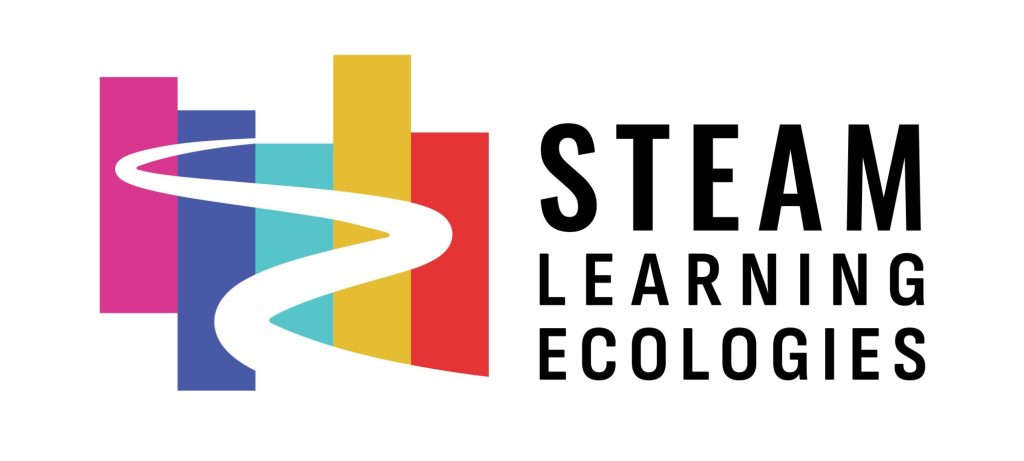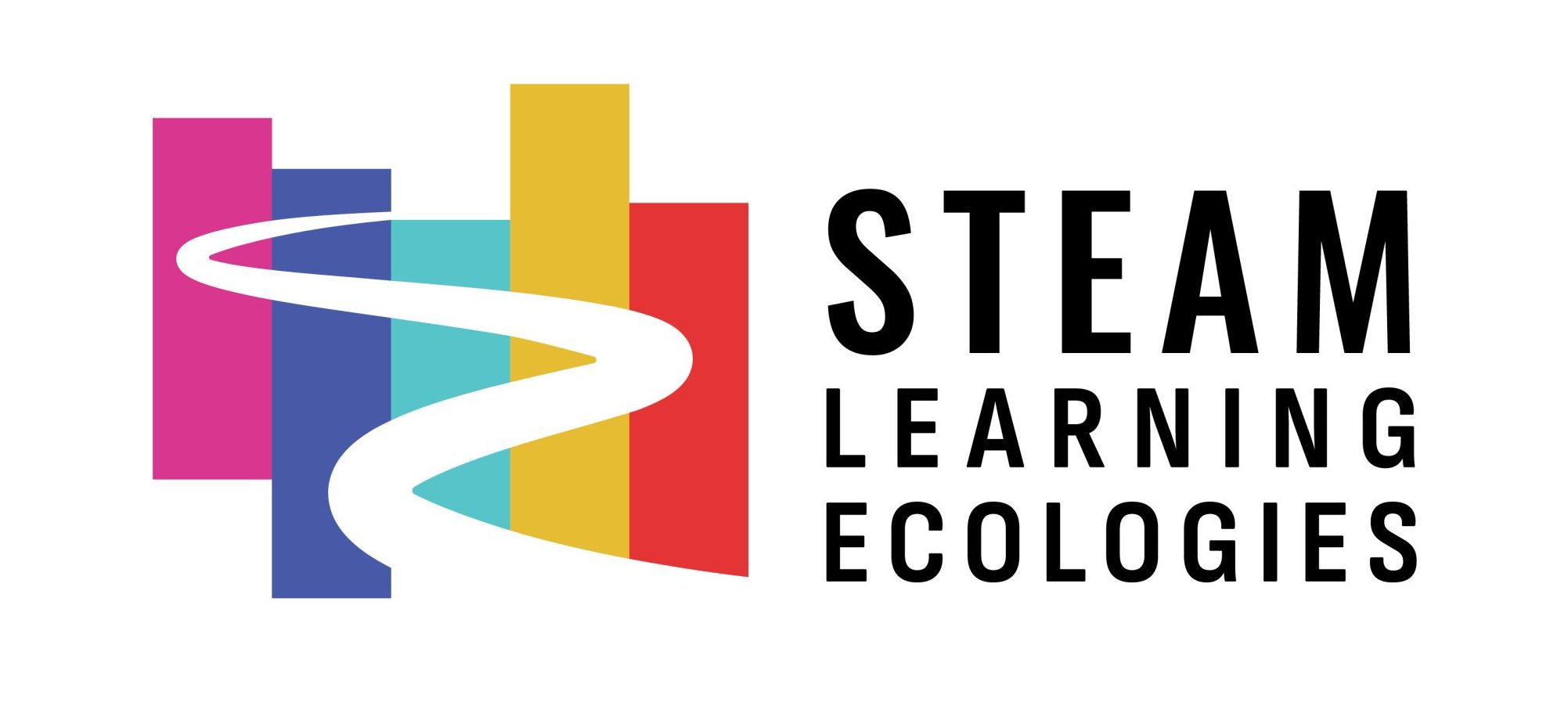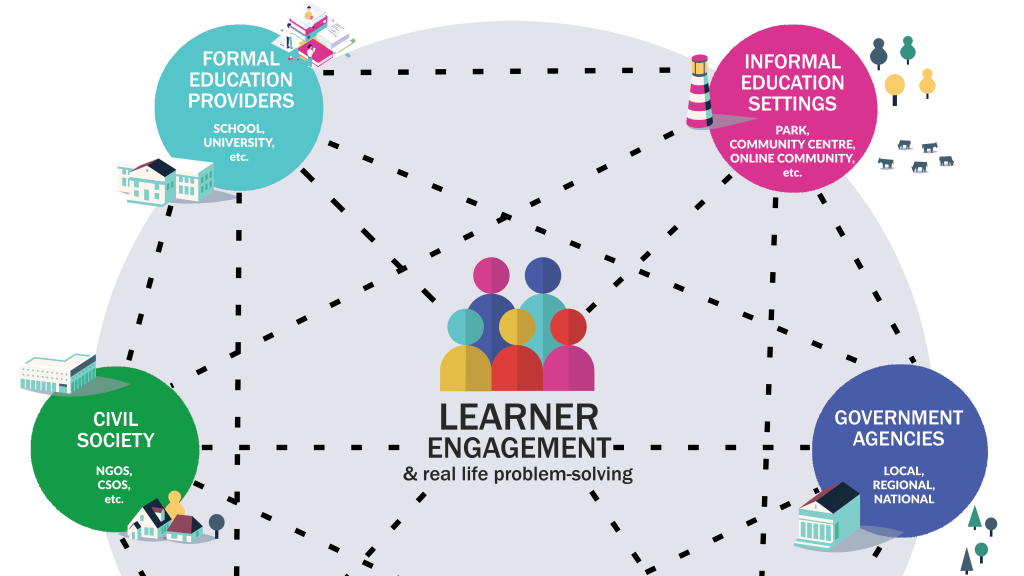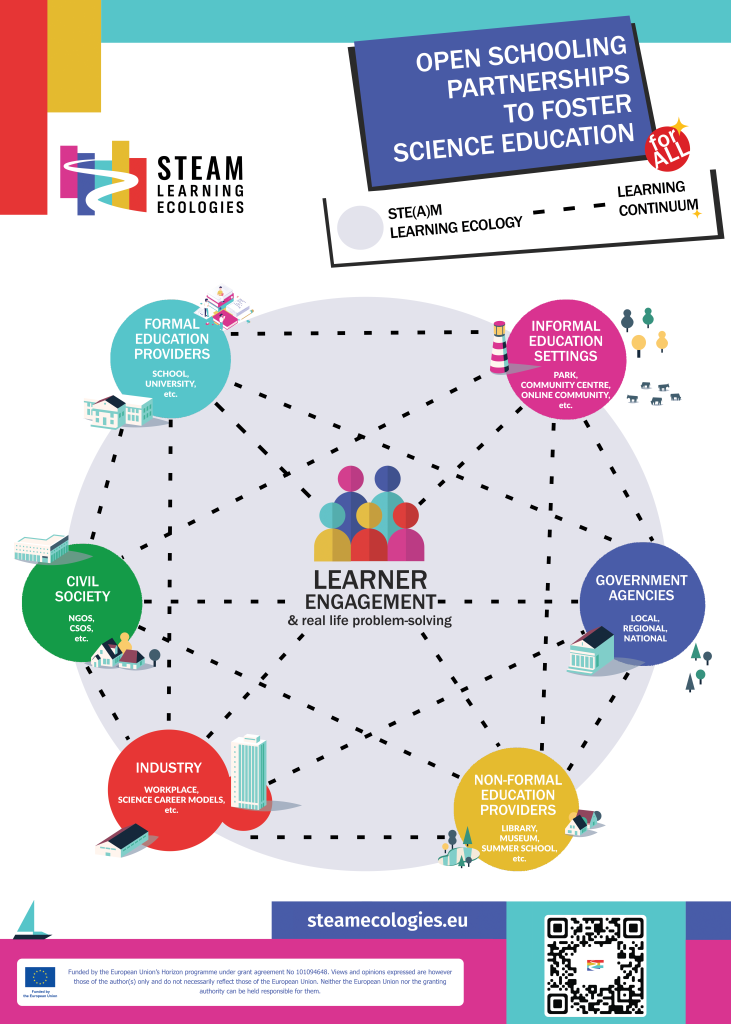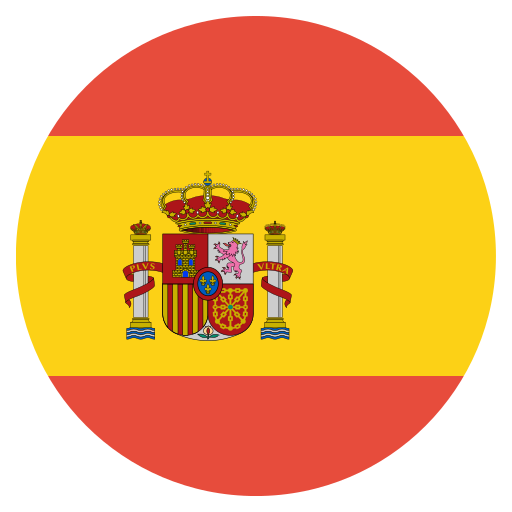The first SLEs infographic aims to capture the innovative nature and various intricacies of a STE(A)M Learning Ecology as an inclusive science learning pathway. A Learning Ecology is the physical, social, and cultural context in which learning takes place, and connects different typologies of actors (formal and non-formal education providers, informal education settings, government agencies, industry, and civil society) within a learning continuum environment.
The visualisation of Learning Ecologies helps understanding their powerful value as vehicles for envisaging and realising impactful local open schooling partnerships.
Are you curious to explore the nature of a Learning Ecology? Take a look below!
As exemplified in our infographic, a Learning Ecology refers to a dynamic and interconnected system or environment where learning takes place across multiple spaces, contexts, and stakeholders. The concept must be placed in the context of STE(A)M education, encompassing Science, Technology, Engineering, All, and Mathematics. Learning Ecologies embody the idea that learning is not confined to traditional educational settings but extends into various realms, including formal and non-formal education providers, informal education settings, government agencies, industry, and civil society.
In a nutshell, the concept of STE(A)M Learning Ecologies:
- views learning as a continuous process that transcends boundaries between disciplines and sectors;
- involves collaboration among diverse stakeholders such as educational institutions, enterprises, civil society organizations, researchers, policymakers, and the broader community. These actors work together to create rich learning experiences, integrate real-world problems into the curriculum, and provide opportunities for hands-on and experiential learning. In doing this, this concept acknowledges the interconnectedness between education, society, and the environment, aiming to prepare learners not only for academic success but also for 1) active participation in civic life and 2) understanding and addressing complex societal challenges;
- emphasizes inclusivity, flexibility, and active engagement, aiming to address the diverse needs and interests of learners;
- recognizes the importance of implementing an environment that encourages exploration, creativity, innovation, and collaboration.
Do you want to download our infographic? You may find different translations below!
